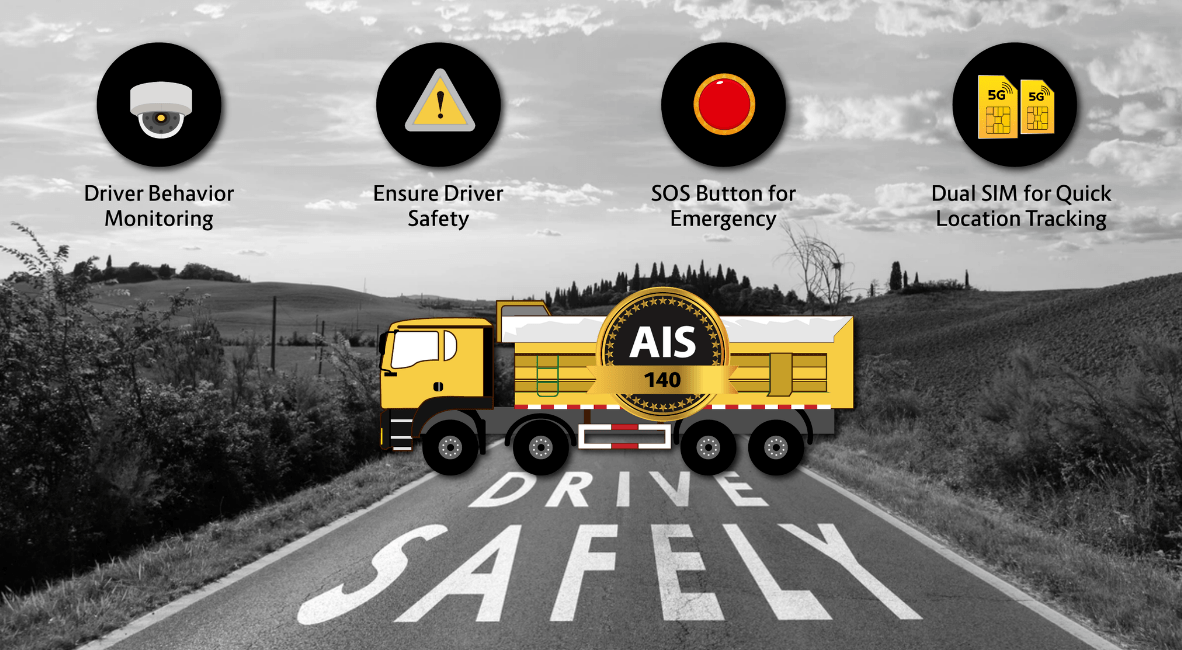Transportation industry is the fastest growing industry in India and the major contributor to the economy. We hear a lot about severe accidents in the news like vehicle theft, fraud during shipment, etc. Many of these could be prevented with proper action and assistance on time. Most often due to unavailability of exact location of the emergency support seeker. Keeping this in view and due to increasing crimes, the Government introduced AIS 140 regulation which is an innovative method revolutionising the public transportation of India.
Automotive Industry Standard 140 (AIS 140) is a collection of regulations prepared by the Automotive Research Institute of India (ARAI) for all public transport systems in India to develop intelligent transport systems. This necessary step was taken when the government recognised the urgent need to increase the efficiency of India’s transport sector.
The Intelligent transportation system “ITS” was created. AIS 140 certification ensures the complete safety of vehicles, drivers and passengers by enabling the monitoring of driver behaviour. The device efficiently tracks reckless or careless driving attempts and generates alerts to avoid accidents. At the same time, ensuring timely support whether it is insurance, police or fire support, everything should be made available to the seeker as soon as possible.
Why is the AIS 140 Regulation Essential for Driver Safety?
Driver Safety is one of the most important aspects when it comes to the transportation industry. A driver’s safety is synonymous to the safety of the vehicle. Various aspects of AIS 140 ensuring driver safety are :
- Driver behaviour monitoring:
AIS certificates also provide data on vehicle speed, length of time, and other similar habitual aspects, allowing violating drivers to be tracked down in case of carelessness or drunken driving.
- Ensure driver safety:
The main goal of this standard was to improve the safety performance of commercial vehicles and make these trips safer for all occupants at any time of her day.
- SOS button for crisis:
An AIS 140 capable vehicle locator has the important feature of activating the emergency button with a single click. As soon as emergency information reaches the emergency response server, preventive action will be taken.
- Dual SIM for quick location tracking:
These GPS devices are equipped with dual SIM cards and send location information to both a server and an SOS server used by police and government command and control centres.

AIS 140 regulation introduction has made commuting safer, faster, more effective and more convenient for ordinary people. Not only this, its excellent features and hi-tech tracking abilities have made drivers more secure and aware about their vehicle. Features like the SOS buttons, tamper alerts, camera surveillance and GPS tracking have helped in improving vehicle performance and optimisation of public transport.






[…] 4.Optimize Driver Safety: Fleet management software can also monitor inventory and parts installed on vehicles to ensure vehicles are operating efficiently and safely. This is part of a high quality inventory management solution. Implementing safety measures like driver training programs, regular vehicle maintenance, and monitoring driving behavior through telematics can enhance overall safety and reduce accidents. Additionally, utilizing technologies such as dashcams and driver monitoring systems contributes to a proactive approach in addressing potential safety issues […]